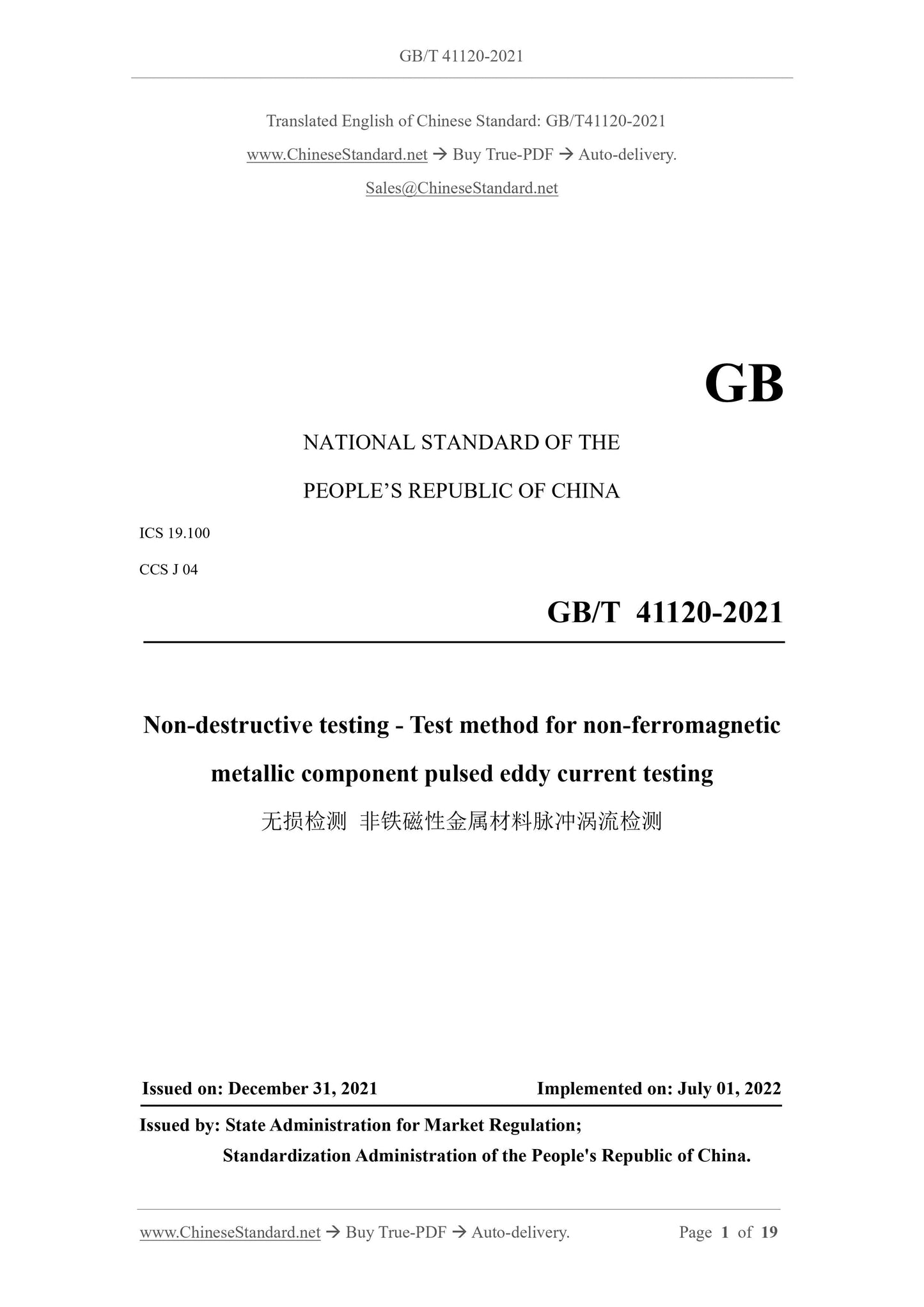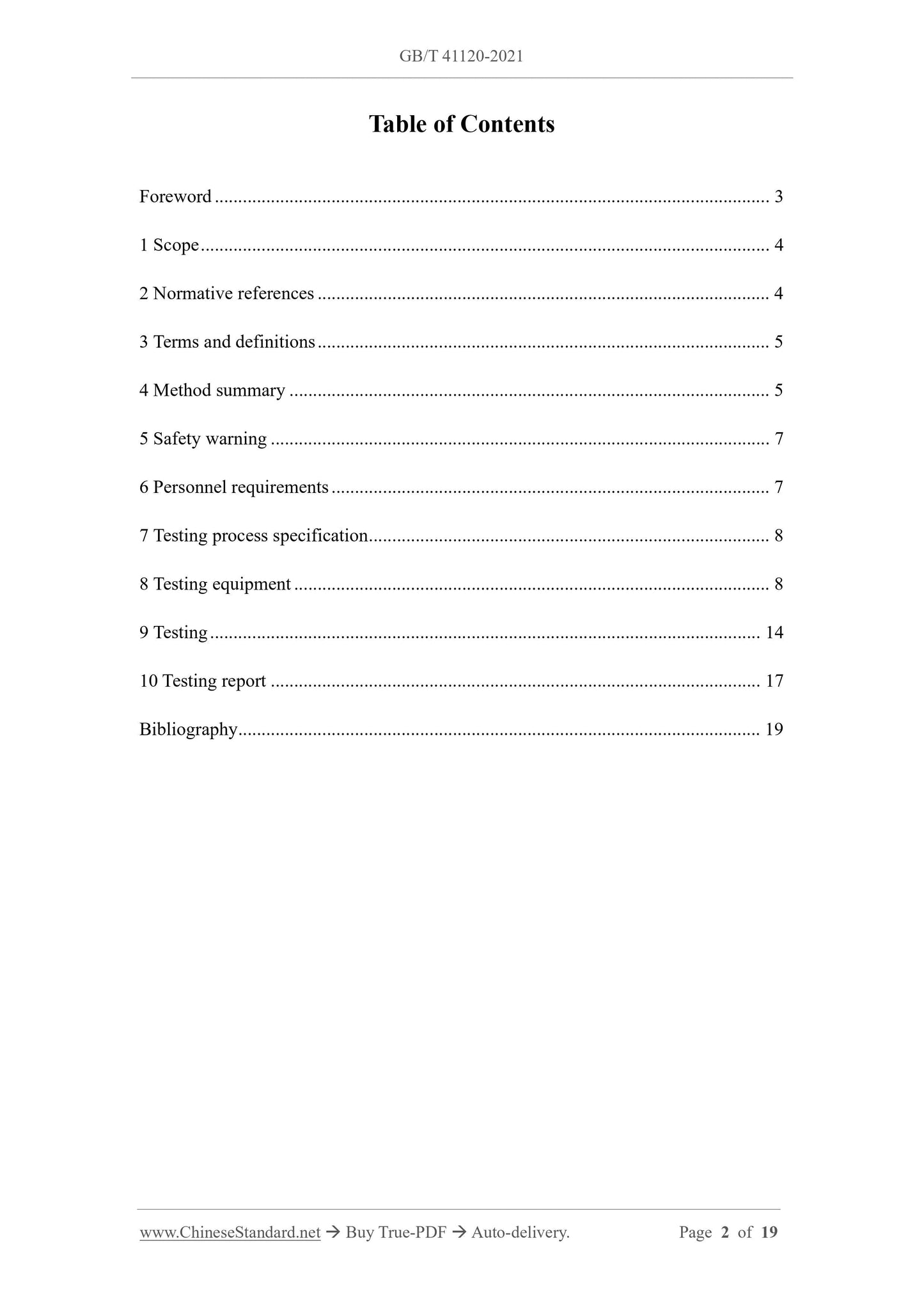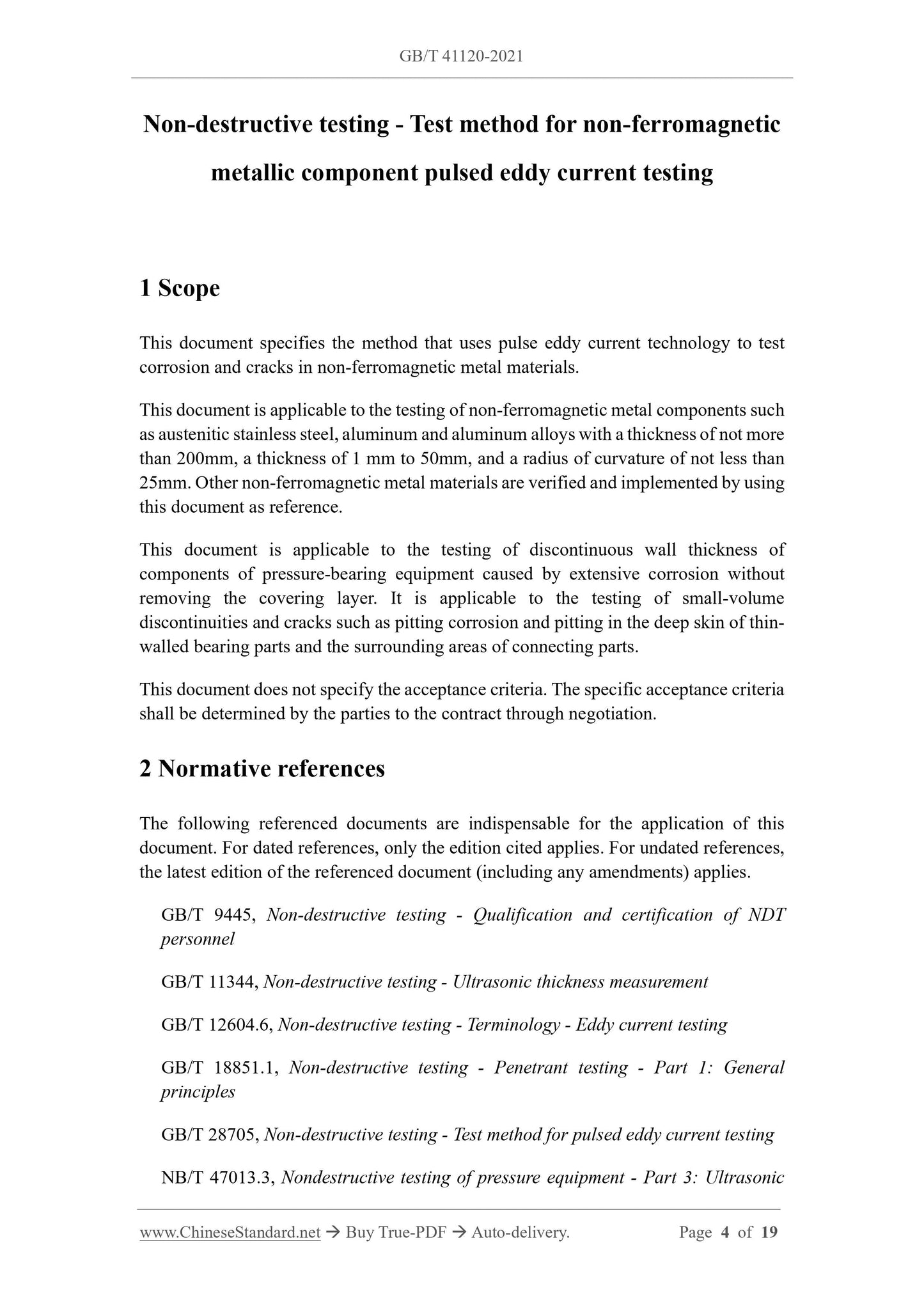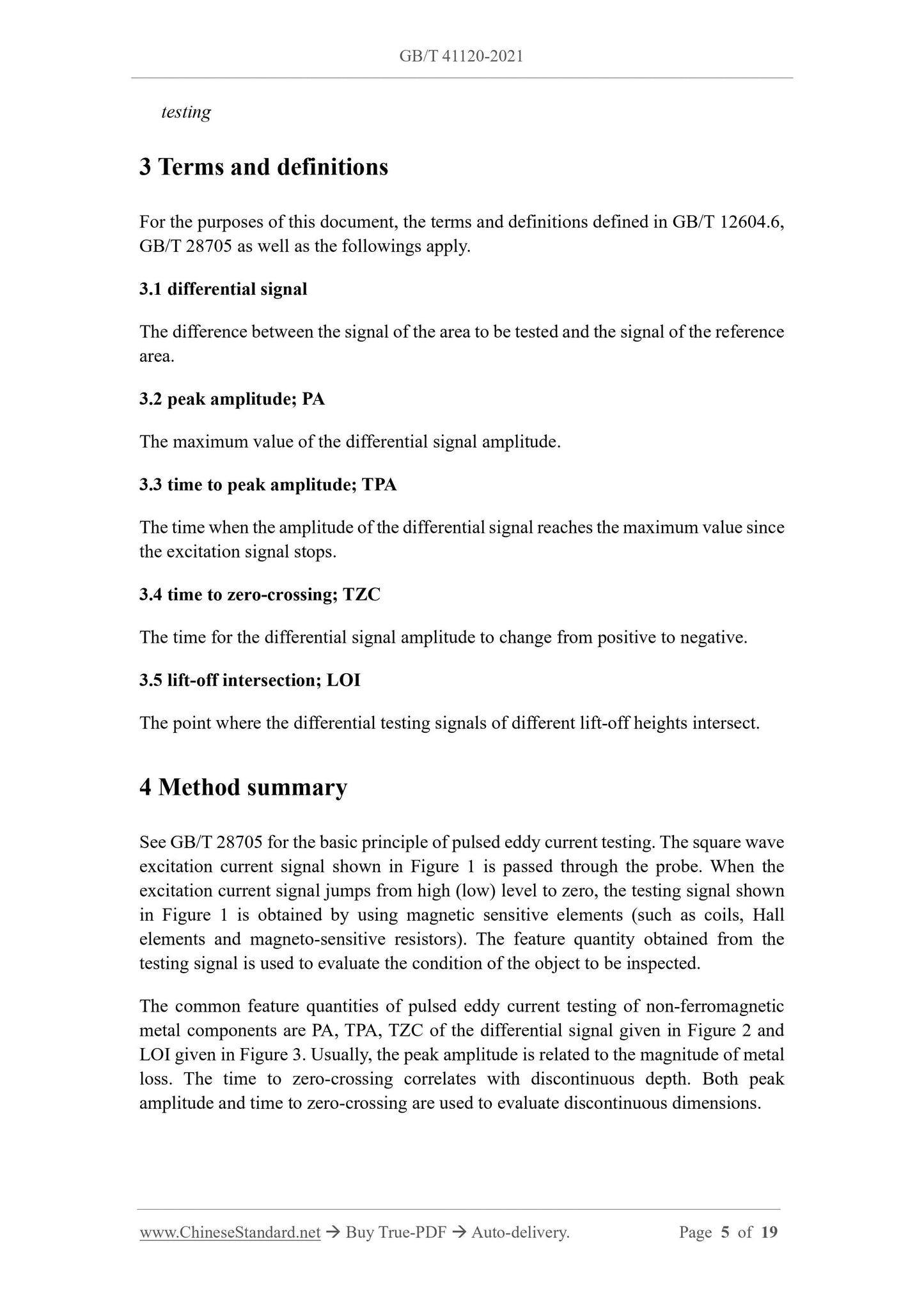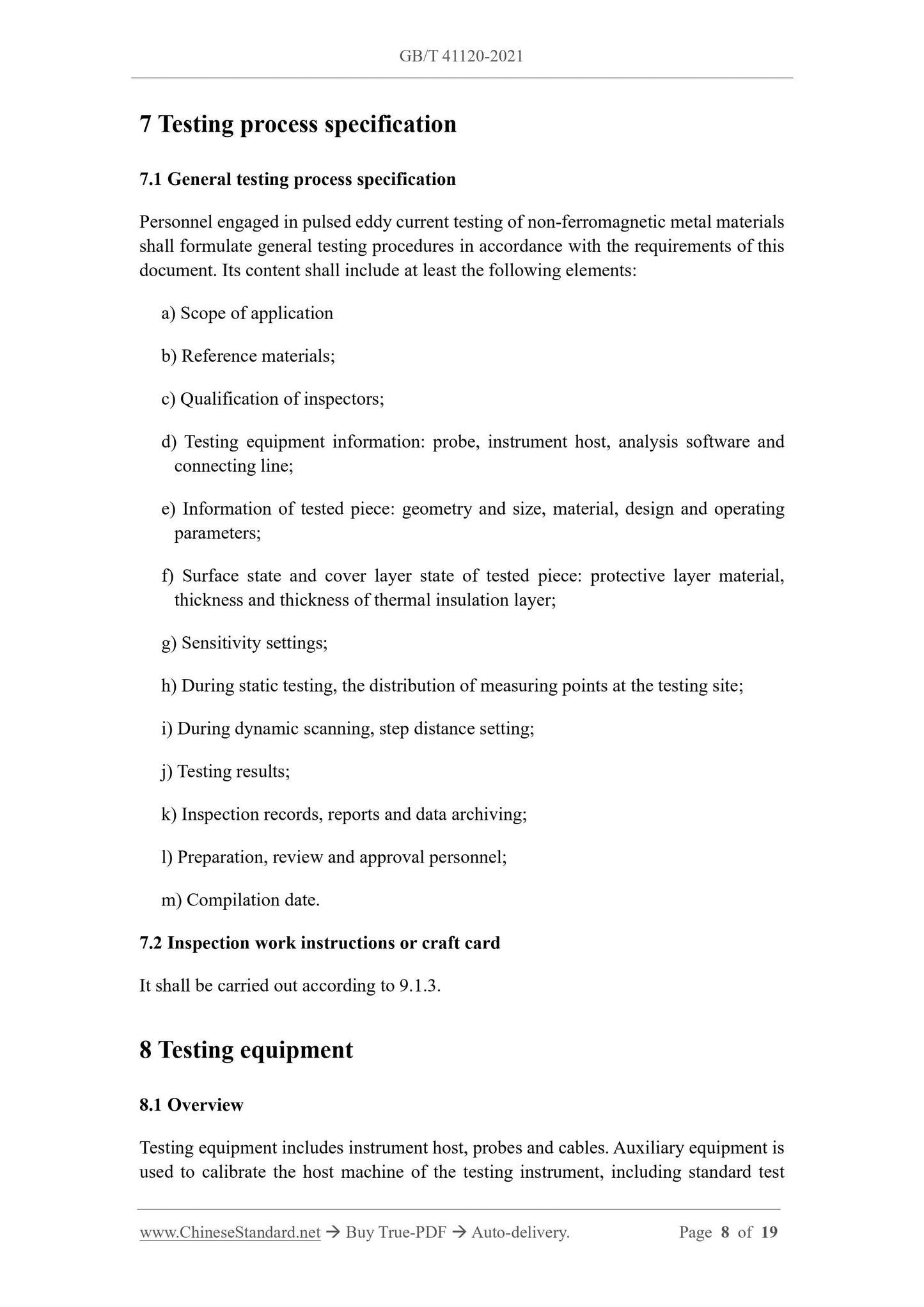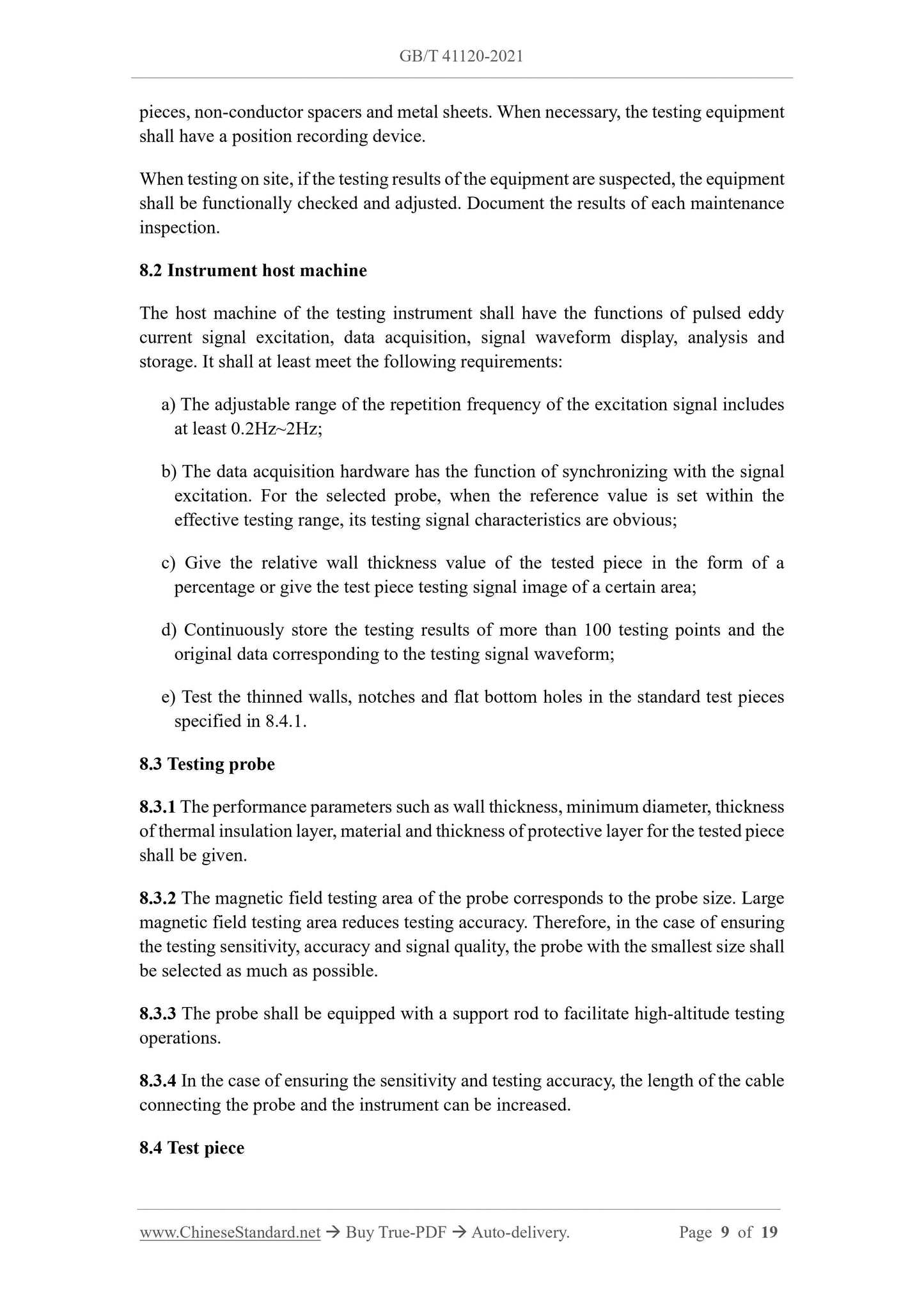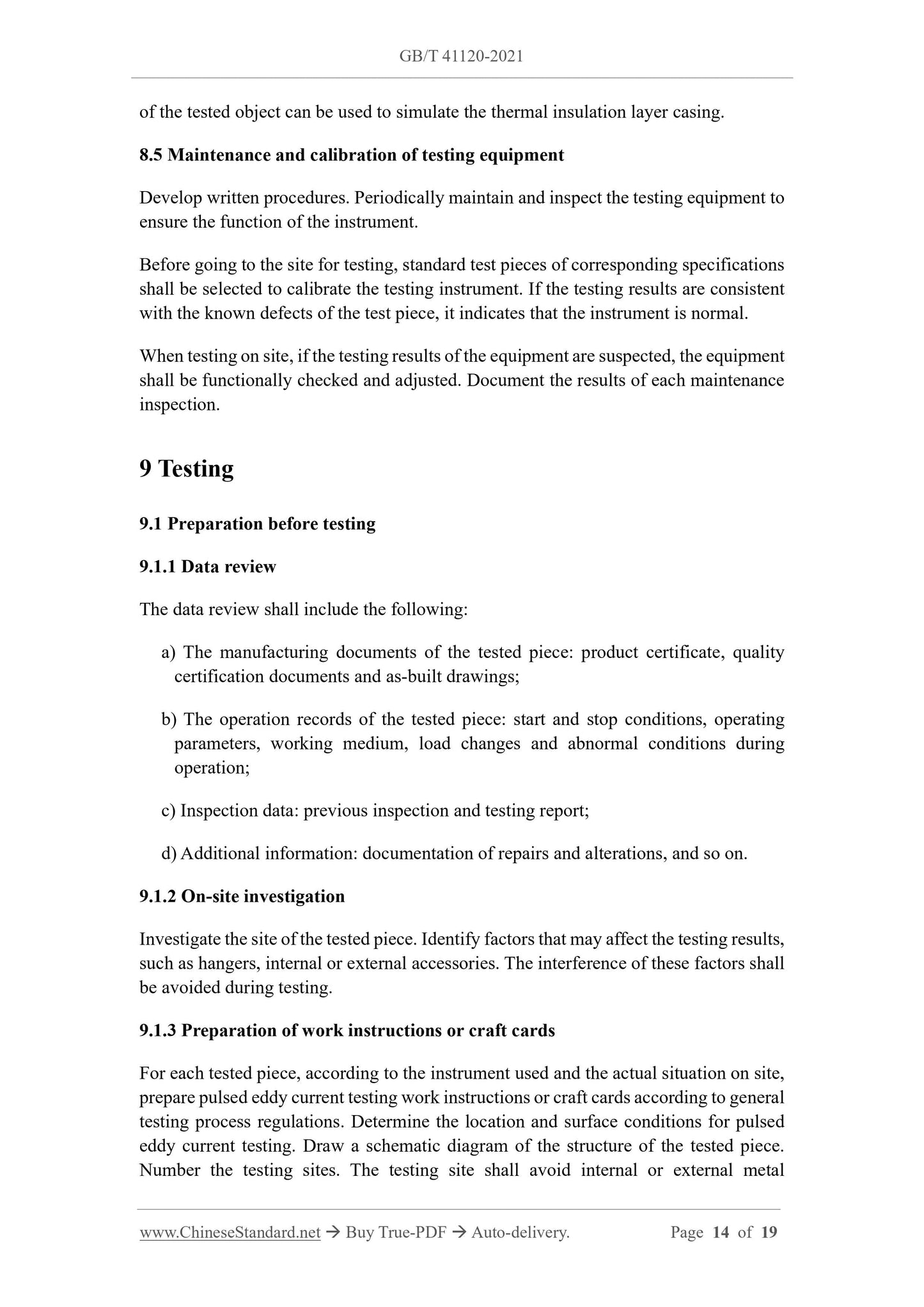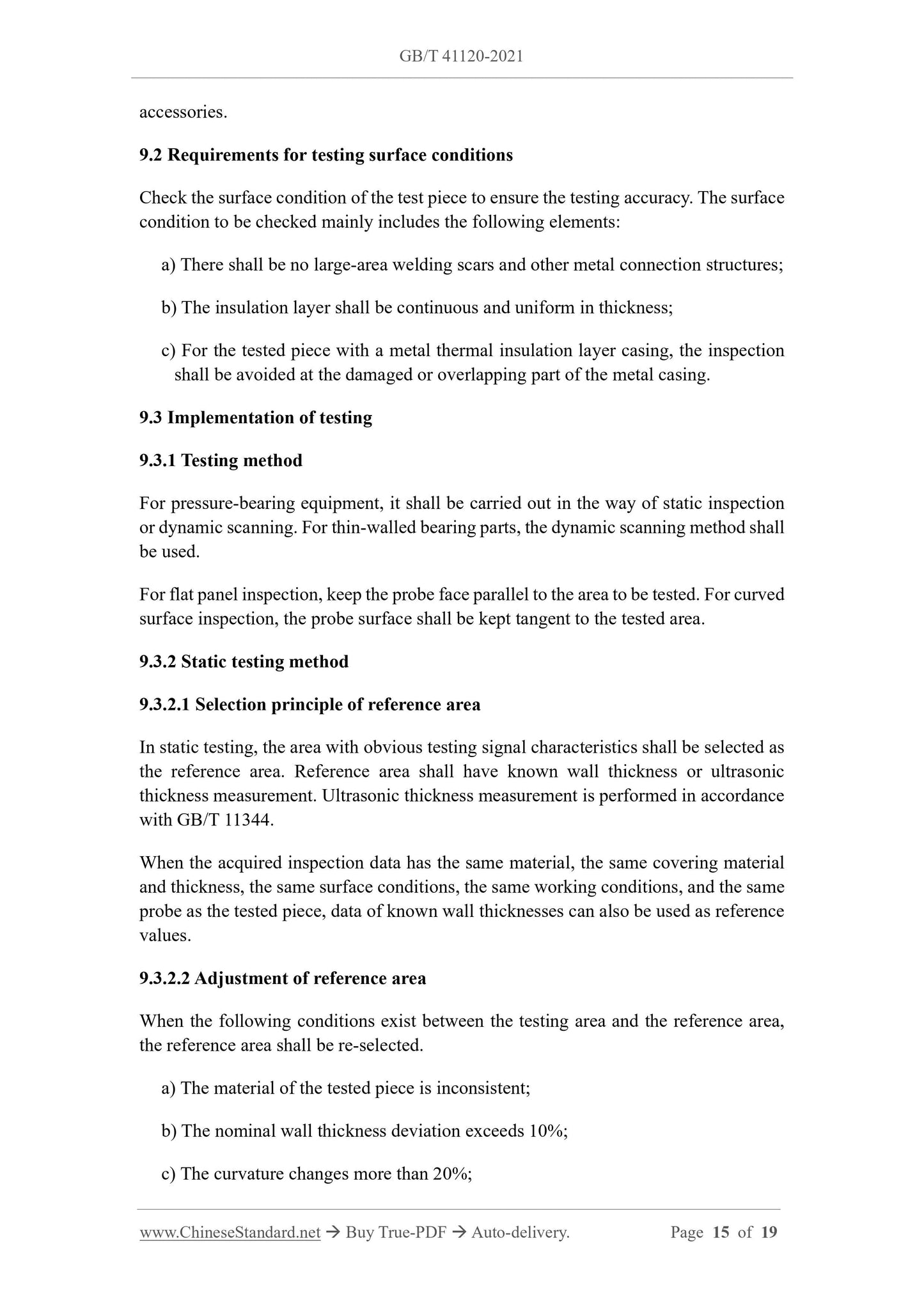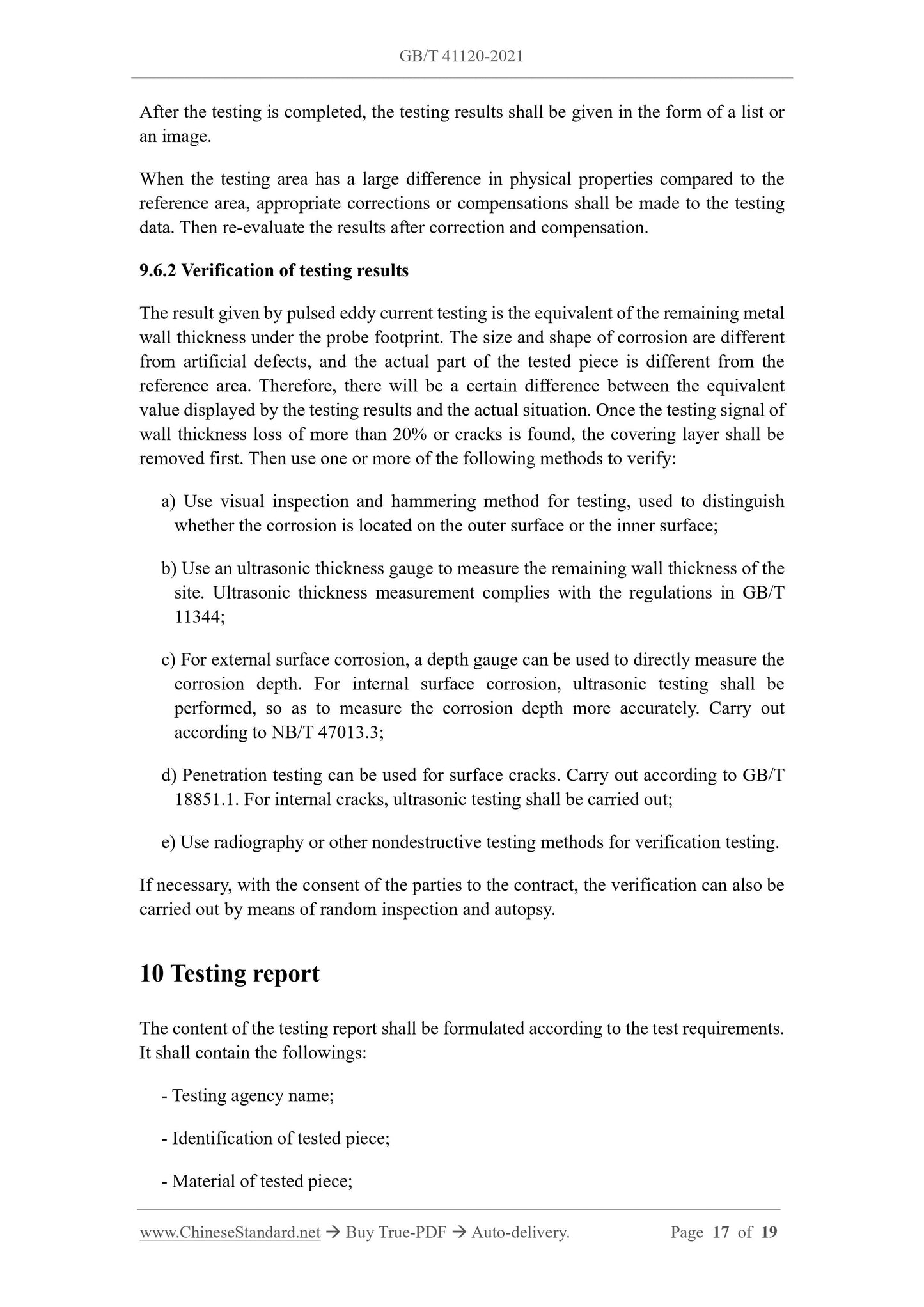1
/
of
9
www.ChineseStandard.us -- Field Test Asia Pte. Ltd.
GB/T 41120-2021 English PDF (GB/T41120-2021)
GB/T 41120-2021 English PDF (GB/T41120-2021)
Regular price
$230.00
Regular price
Sale price
$230.00
Unit price
/
per
Shipping calculated at checkout.
Couldn't load pickup availability
GB/T 41120-2021: Non-destructive testing - Test method for non-ferromagnetic metallic component pulsed eddy current testing
Delivery: 9 seconds. Download (and Email) true-PDF + Invoice.Get Quotation: Click GB/T 41120-2021 (Self-service in 1-minute)
Newer / historical versions: GB/T 41120-2021
Preview True-PDF
Scope
This document specifies the method that uses pulse eddy current technology to testcorrosion and cracks in non-ferromagnetic metal materials.
This document is applicable to the testing of non-ferromagnetic metal components such
as austenitic stainless steel, aluminum and aluminum alloys with a thickness of not more
than 200mm, a thickness of 1 mm to 50mm, and a radius of curvature of not less than
25mm. Other non-ferromagnetic metal materials are verified and implemented by using
this document as reference.
This document is applicable to the testing of discontinuous wall thickness of
components of pressure-bearing equipment caused by extensive corrosion without
removing the covering layer. It is applicable to the testing of small-volume
discontinuities and cracks such as pitting corrosion and pitting in the deep skin of thin-
walled bearing parts and the surrounding areas of connecting parts.
This document does not specify the acceptance criteria. The specific acceptance criteria
shall be determined by the parties to the contract through negotiation.
Basic Data
| Standard ID | GB/T 41120-2021 (GB/T41120-2021) |
| Description (Translated English) | Non-destructive testing - Test method for non-ferromagnetic metallic component pulsed eddy current testing |
| Sector / Industry | National Standard (Recommended) |
| Classification of Chinese Standard | J04 |
| Word Count Estimation | 14,187 |
| Issuing agency(ies) | State Administration for Market Regulation, China National Standardization Administration |
Share
